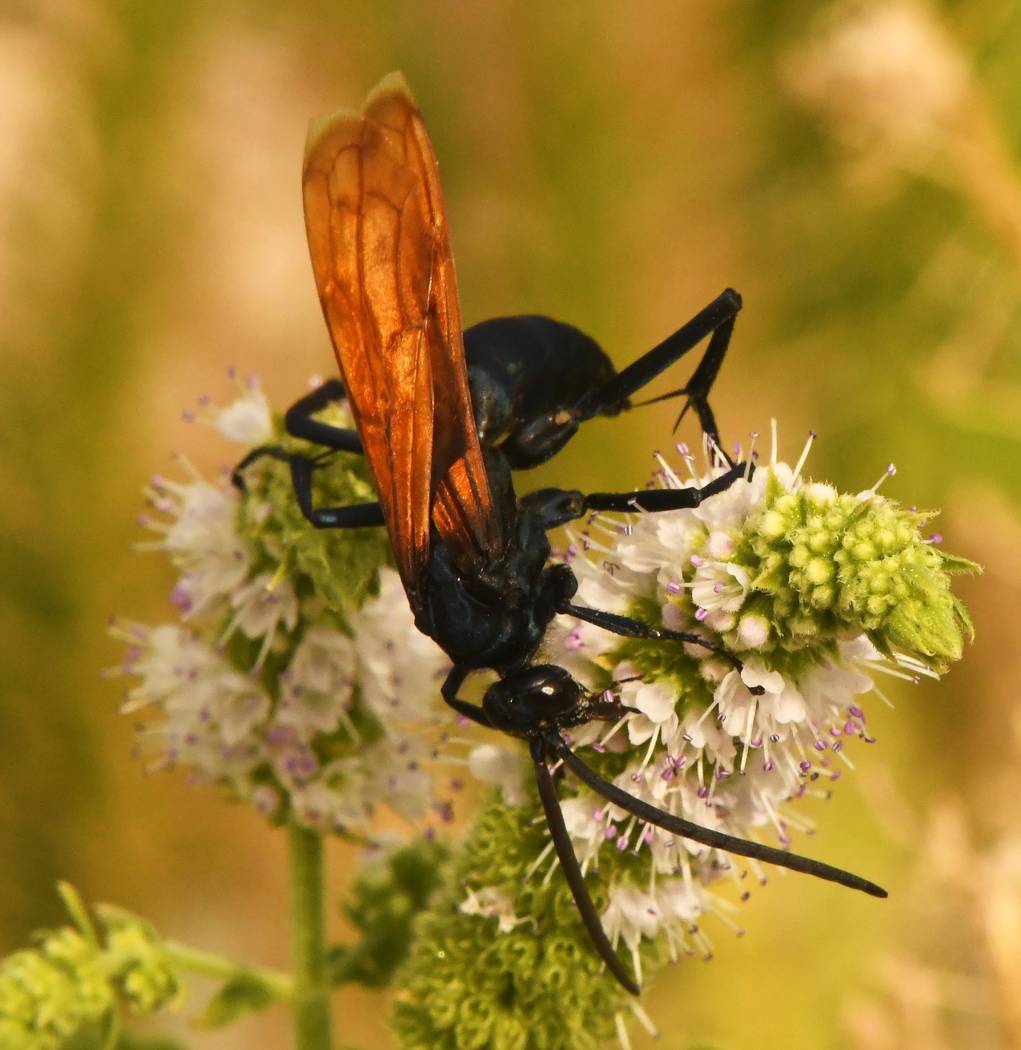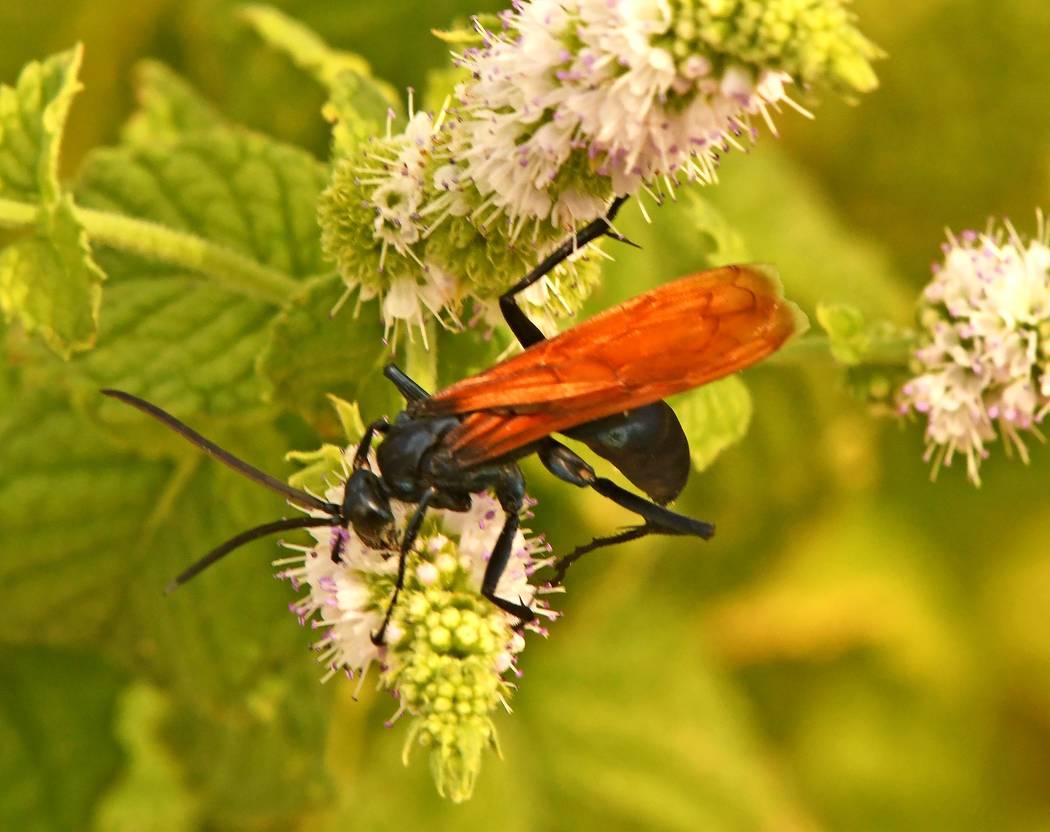Insect found in Beatty area packs a wallop
This story starts with a velvet ant. I spotted one in our yard in Beatty and pointed it out to visiting grandchildren.
A velvet ant, which looks like a giant ant covered in fuzz (around here, the fuzz is usually red, sometimes white), isn’t really an ant at all. It is a wingless wasp. The sting of this insect is so painful, that its common nickname is “cow killer” or “horse killer. One of our sons experienced its potency first-hand (literally) when, as a boy, he picked up what looked like a cute little fuzz ball running around the ground.
In researching this insect, however, I discovered that another wasp that is common here in our desert has an even more powerful sting.
Arizona entomologist, Justin O. Schmidt, who lays claim to having been stung by some 150 different species of stinging insects, long ago devised an admittedly subjective scale to rate the painfulness of stings.
The Schmidt index, which ranges from 0, for stings you wouldn’t even feel, to 4, for the most excruciating of all, rates the velvet ant’s sting at 3, on a par with that of the red paper wasp, although much more long-lasting.
It is topped by the level 4 sting of our neighbor the tarantula hawk.
Schmidt wrote colorful descriptions for various stings. He describes the sting of the tarantula hawk as, “Blinding, shockingly electric. A running hair drier has been dropped into your bubble bath.”
The only insect Schmidt has found to have a more painful sting than the tarantula hawk is the bullet ant of Central and South America. He describes its 4+ sting as,” Pure, intense, brilliant pain. Like walking over a flaming charcoal with a 3-inch nail embedded in your heel.”
The entomologist also said that he had found that the more painful the insect’s sting, the more aggressive it tended to be. However, having lived with tarantula hawks for decades, and having gotten up close and personal with them with my camera, I’ve never found them aggressive—except toward tarantulas.
The name of these black, orange-winged wasps comes from their practice of stinging tarantulas, which they then drag into underground burrows. They lay their eggs in the paralyzed tarantulas, and their young use the still-living tarantula as their initial food source.
Tarantula hawks seem to enjoy feeding on the nectar of feathery flowers. I have often found them feeding on tamarisk flowers, and just this morning there were three feeding on the flowers of mint plants in my front flower bed.
Beatty resident Virginia Goodson is the only person who has told me she was stung by a tarantula hawk. She said she was reaching to pick an apple that the insect “thought was his.” People’s reactions to insect stings can differ, but she said that her hand was paralyzed for about five days. Perhaps it is not so wise to get up close and personal with them.
Richard Stephens is a freelance reporter living in Beatty.


















